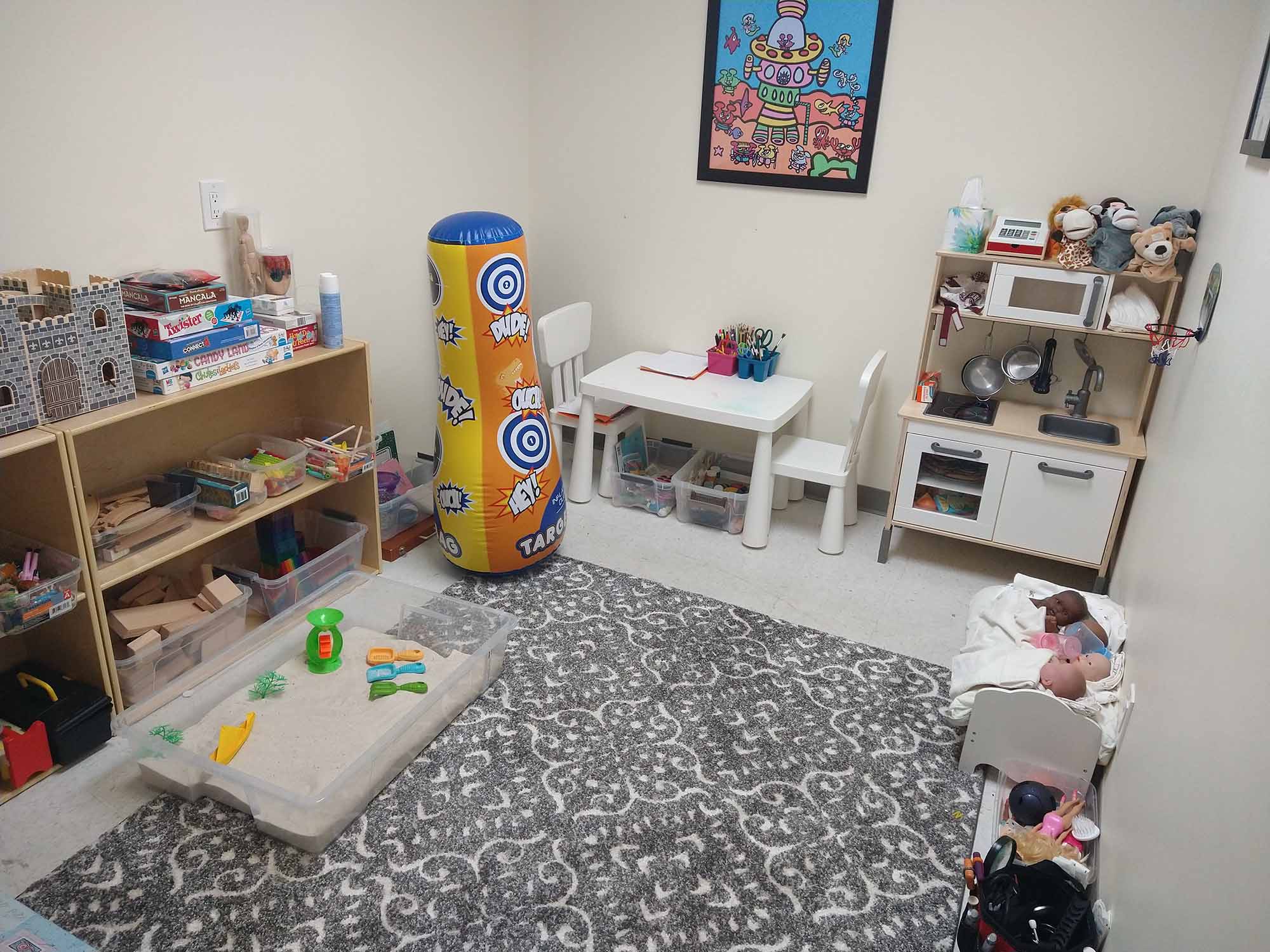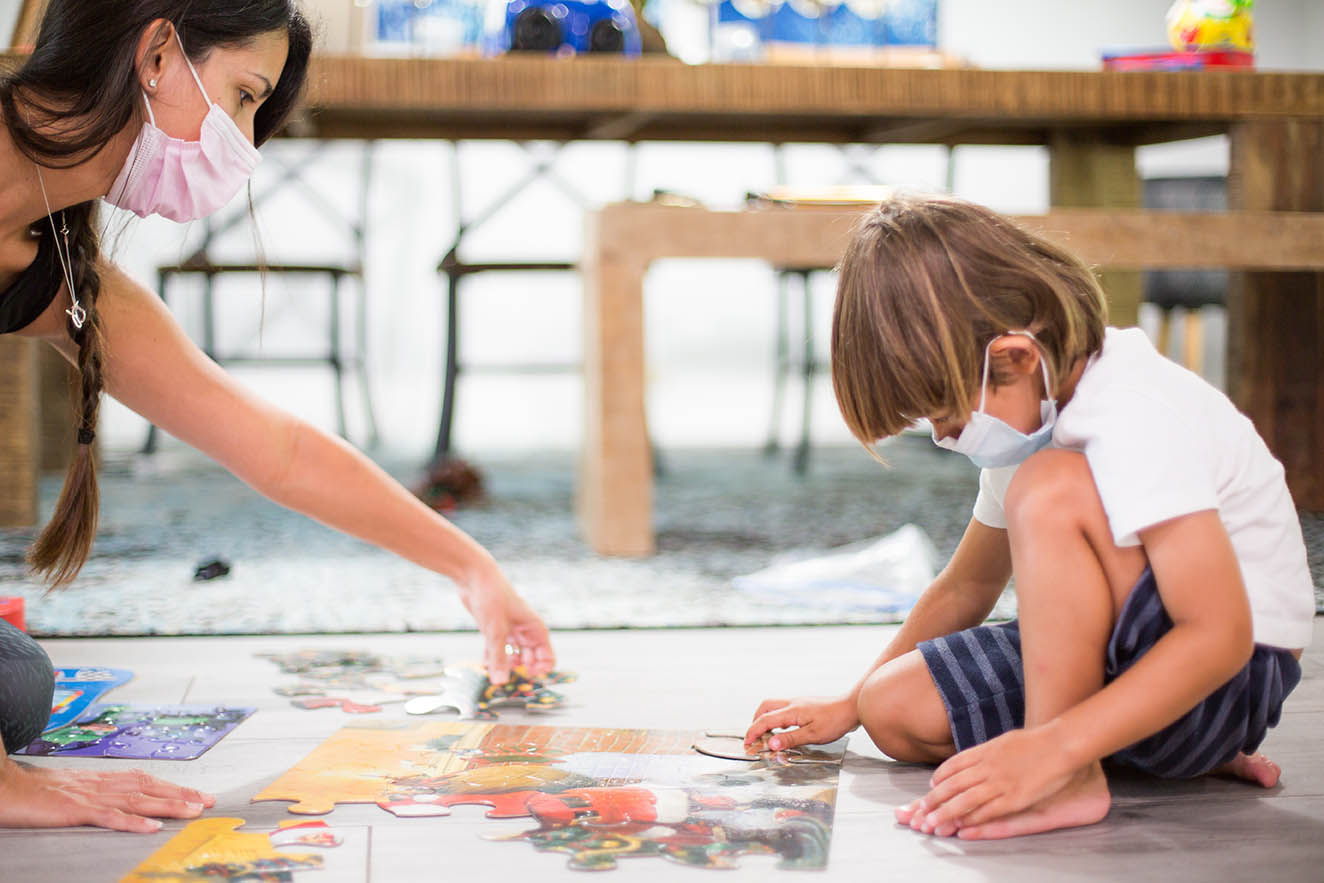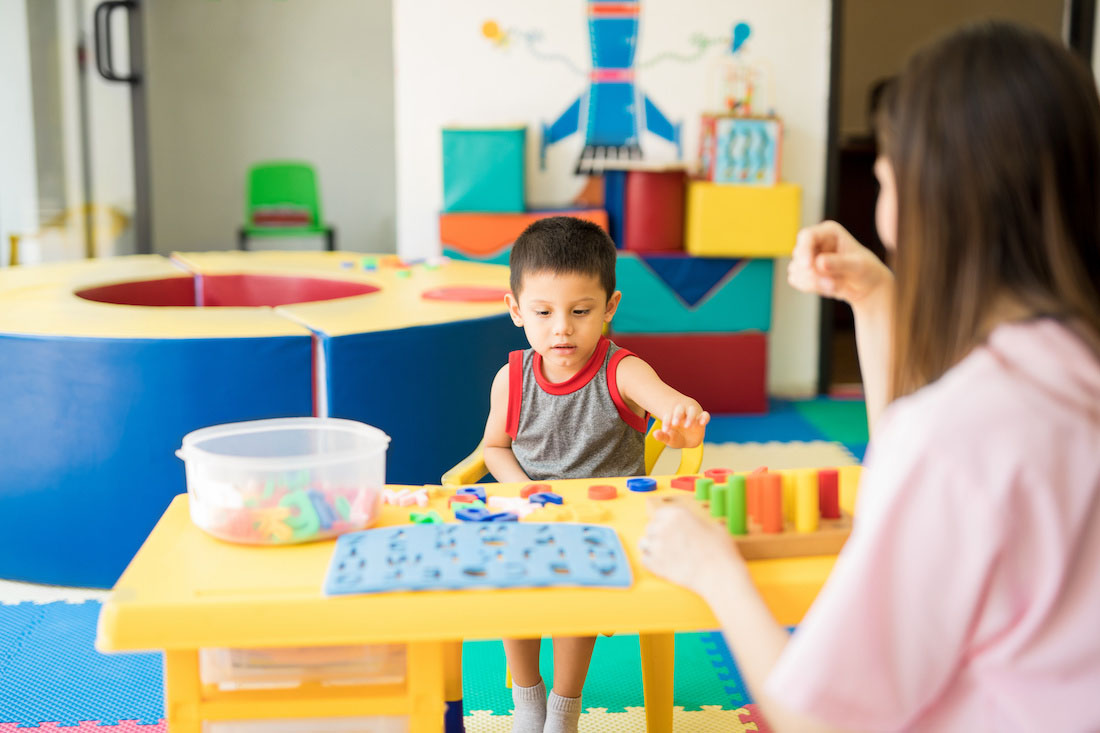Play Therapy
Play – The Universal Language of Children
“In the play therapy experience, toys are like the child’s words, and play is the child’s language.” (Garry Landreth)

Play therapy is a treatment method used with young children to help with issue including trauma, anxiety, low self esteem, social skills, bullying, emotional regulation, and challenging behaviors. Children often have a hard time verbalizing their feelings, needs, and desires. Play is a natural and universal way children communicate, and in therapy we use this “language” to help children who are strugglling. In play therapy toys are the “words” and play is
the “language”. (Through open-ended pretend play, art, sensory activities (water, sand, play dough) literature, and music, we help children express their feelings, needs, and desires, at a time and level they are comfortable with ) Often times just being able to express themselves through play, resolves the issue. In other cases, it opens the door to working with the child on developing the appropriate skills and strengths to deal with their issue. When it comes to children, it is imperative to start treatment as soon as parents recognize that there is an issue. Early intervention prevents children from developing more serious mental health issues in the future.
Specialties
- Anxieity
- Stress
- Social Skills
- Self Esteem
- Depression
- Peer Relationships
- Parenting
- Divorce
- Coping Skills
- Behavioral Issues
- Women’s Issues
Modality
- Individuals
- Family
- Group
“In the play therapy experience, toys are like the child’s words, and play is the child’s language.” (Garry Landreth)
Children can have a lot of trouble adjusting to big changes in life, especially when the decisions are being made by adults. Kids need a way to sort through all the different feelings they may be having as they are still adjusting. Kids are more likely to act out their emotions and express their biggest emotions through their behavior (for example temper tantrum). When adults are struggling, they may see a therapist and talk through their issues, but even for adults It can be difficult at times to describe or put into words some of what they are going through. That can be even harder for children.
Because children are better at showing their feelings through their actions, Play is a great way for them to express their feelings, thoughts, and desires. In play Therapy children don’t feel a pressure to explain themselves or try to find the right words for what they are thinking or feeling. Play Therapy allows children to create stories through which they can express and process their feelings and find solutions to their problems with the help of the therapist.

Children may not be able to solve problems easily when in the middle of a crisis because their emotions are taking over and they feel out of control (it’s actually a result of neurological activity where the lower brain takes the upper brain “hostage”). Play Therapy puts the child back in control by allowing him/her to direct what happens in session. The Playroom has a large selection of toys and creative materials, and children decide what they want to do. As the therapist, my role is to follow the child’s lead, play along, reflect on the child’s actions, feelings, and meaning of play and to help him/her resolve the problems that come up in their stories. When children are allowed to play the stressful situation in the playroom, they are able to look at a problem from different angles and try out new coping skills and solutions in a low-stress environment. Giving children the control in playroom, allows them to learn and master new skills to resolve their issues in a place that is safe and non-judgmental and at a time and pace that is right for them.
Although your child in “in charge” of what happens in the session, there are a few boundaries mainly to keep the both of us safe.

- We don’t hurt each other or ourselves, and we try not to break the toys on purpose. (sometimes things break by accident and that’s ok)
- Kids can get angry here and bang things around (we actually want that). That doesn’t mean that we will stop the session, but I might give the child some choices to keep things safe so we can continue.
- Making a little mess is ok in here
- We try and stay in the playroom
- Everything that belongs in the Playroom stays in the playroom, so toys are available for the kids when they come back the following week.
- Children often do some drawing or painting here, and I’ll keep them here in an art folder. This is like keeping a journal of what your child does in therapy and many children like taking it home and looking back at their artwork as a reminder of what they did and how much they’ve changed.
So that kids feel comfortable sharing their thoughts and feelings with me, I will keep most of what happens in our sessions confidential, just like therapy with adults. However, I stay in touch with parents regularly to discuss my general impressions or to offer some suggestions. Of course if the child lets me know any safety concerns, like if someone was hurting him, or he was hurting himself, or he was planning to hurt someone else, I would need to let somebody know, like calling you right away or consulting with another professional who protects children. Your child is welcome to tell you anything about his Play Therapy sessions, but some children do keep it to themselves, so it’s better not to ask them what they did after a session. However, if your child does want to share their experiences with you, it’s important to listen and show them you understand.
The first time that your child comes to Play Therapy, I’ll come out to the waiting room and introduce myself and show him/her to the Playroom. Most children are eager to get in there and play, but some are a little hesitant about trying something new and meeting a new person. If your child seems unsure, we can give him/her a few minutes to get to know me in the waiting room, and if he/she needs it, I might invite you to walk with us to the Play Room or join us for a little while in the Play Room until your child settles in. Once your child is comfortable, you can let him/her know you’ll be in the waiting room and see him/her when session is finished. Sessions are for 60 minutes although at times, children might want to leave a little early (especially if they have hard time separating from caregivers) or want stay longer (which often happens). Leaving when it’s time to go is actually a great opportunity for the child to practice following rules, impulse control, time management, and overcoming anxiety.
You might be wondering what to tell your child about Play Therapy before he/she comes in. So, you can tell your child that he/she is going to meet Sigi, who has a playroom where kids can make their own play rules. Tell your child it will be his/her special time to choose what they want to do. If your child wants to know why he/she is coming to the Play Therapy, then coming up with a short, general statement he/she will understand is best. For example “I’ve noticed you seem more (stressed, sad, angry) since we moved, and Sigi knows a way of playing that helps kids feel better.
